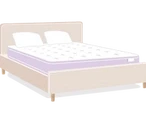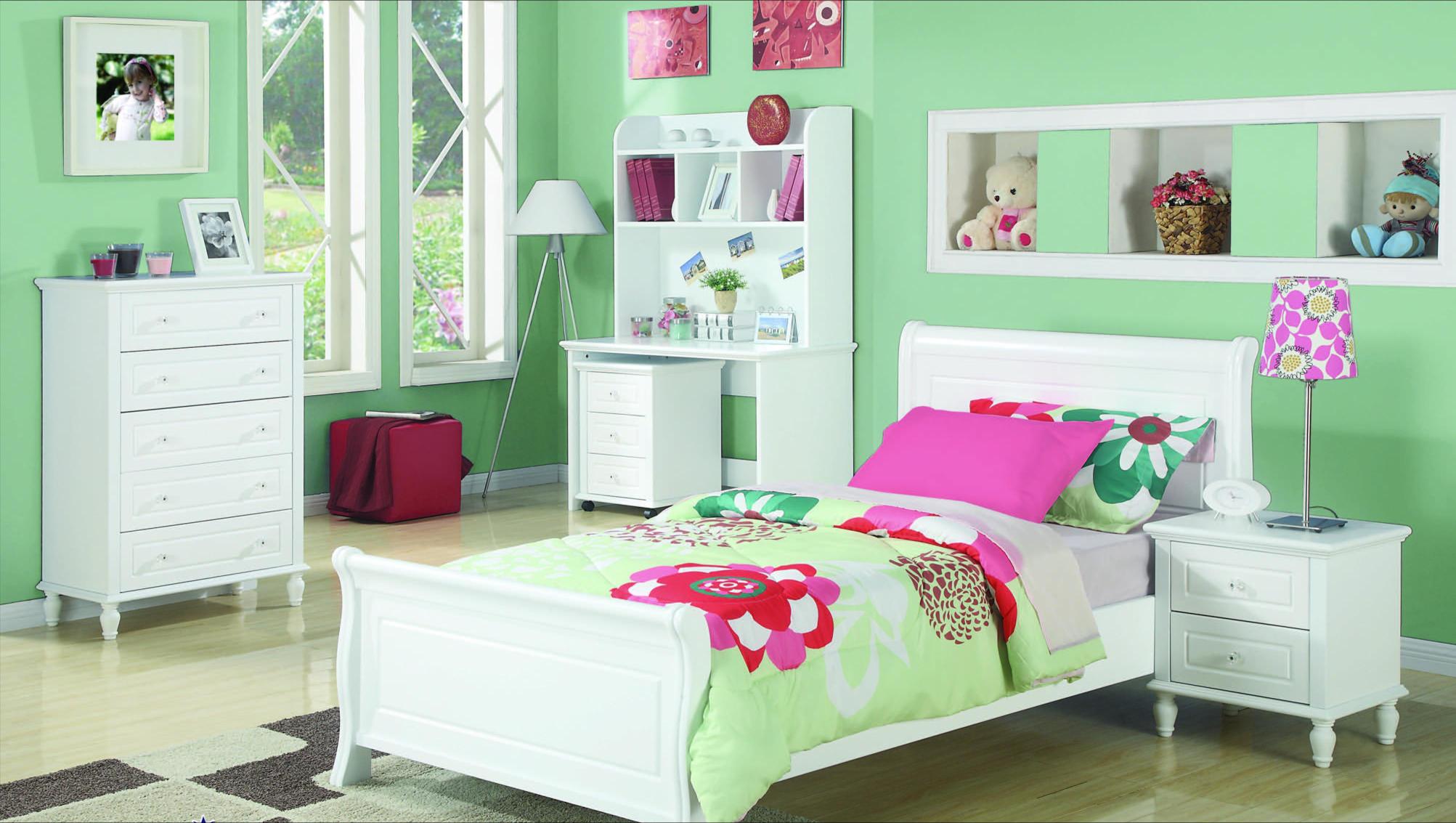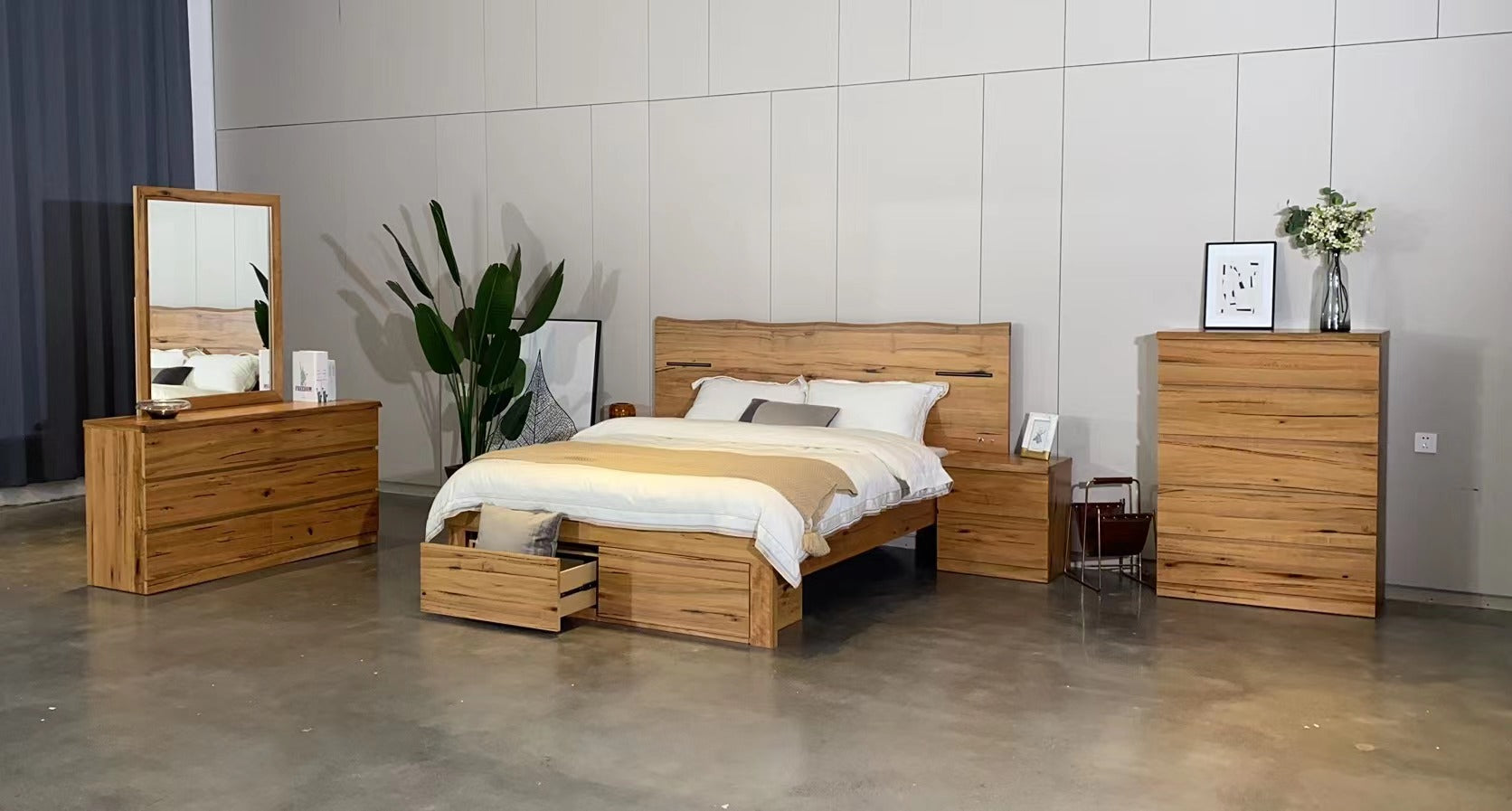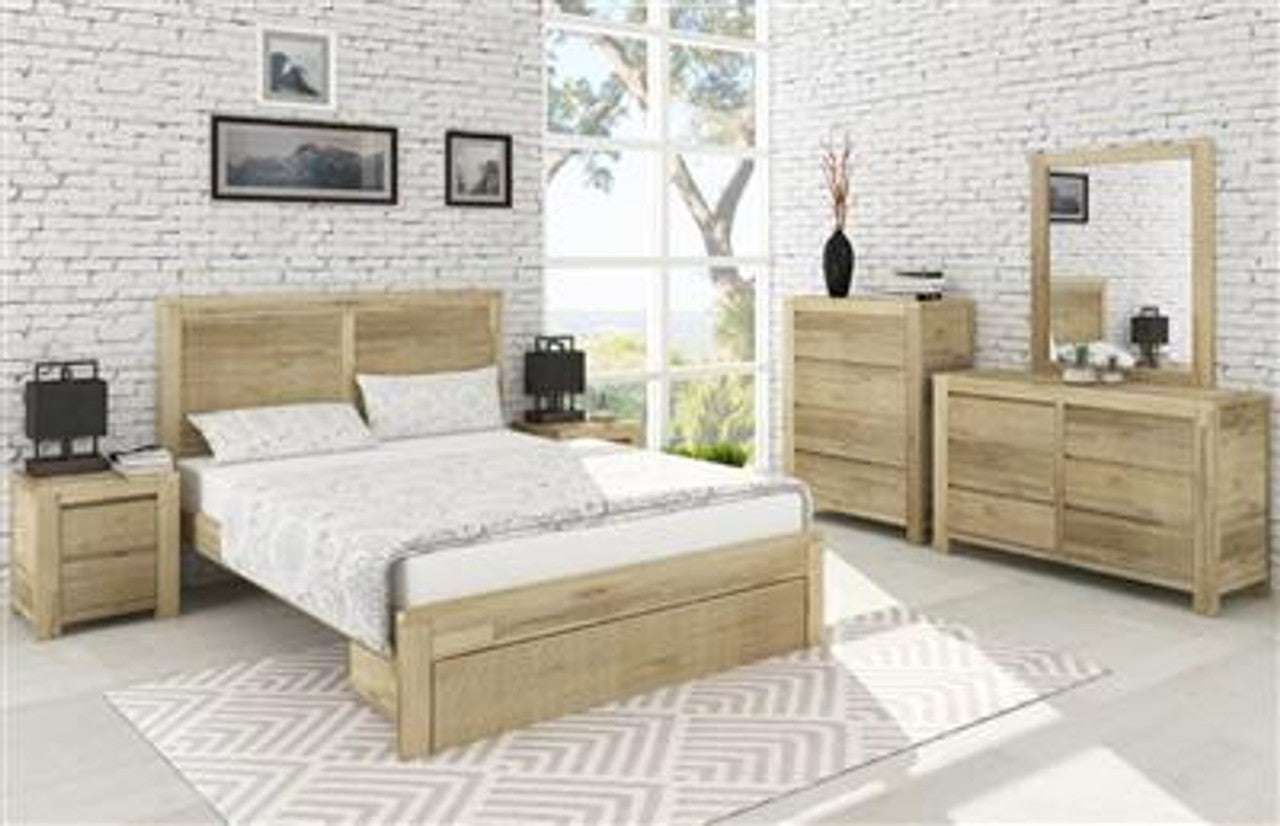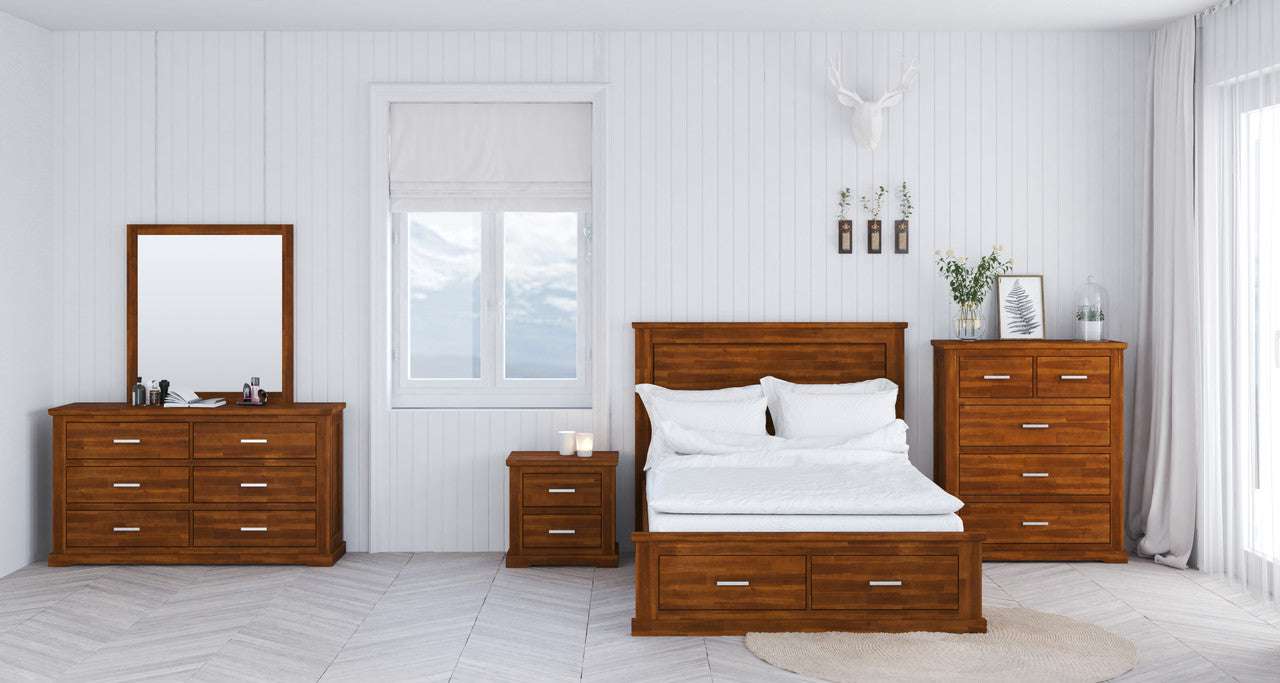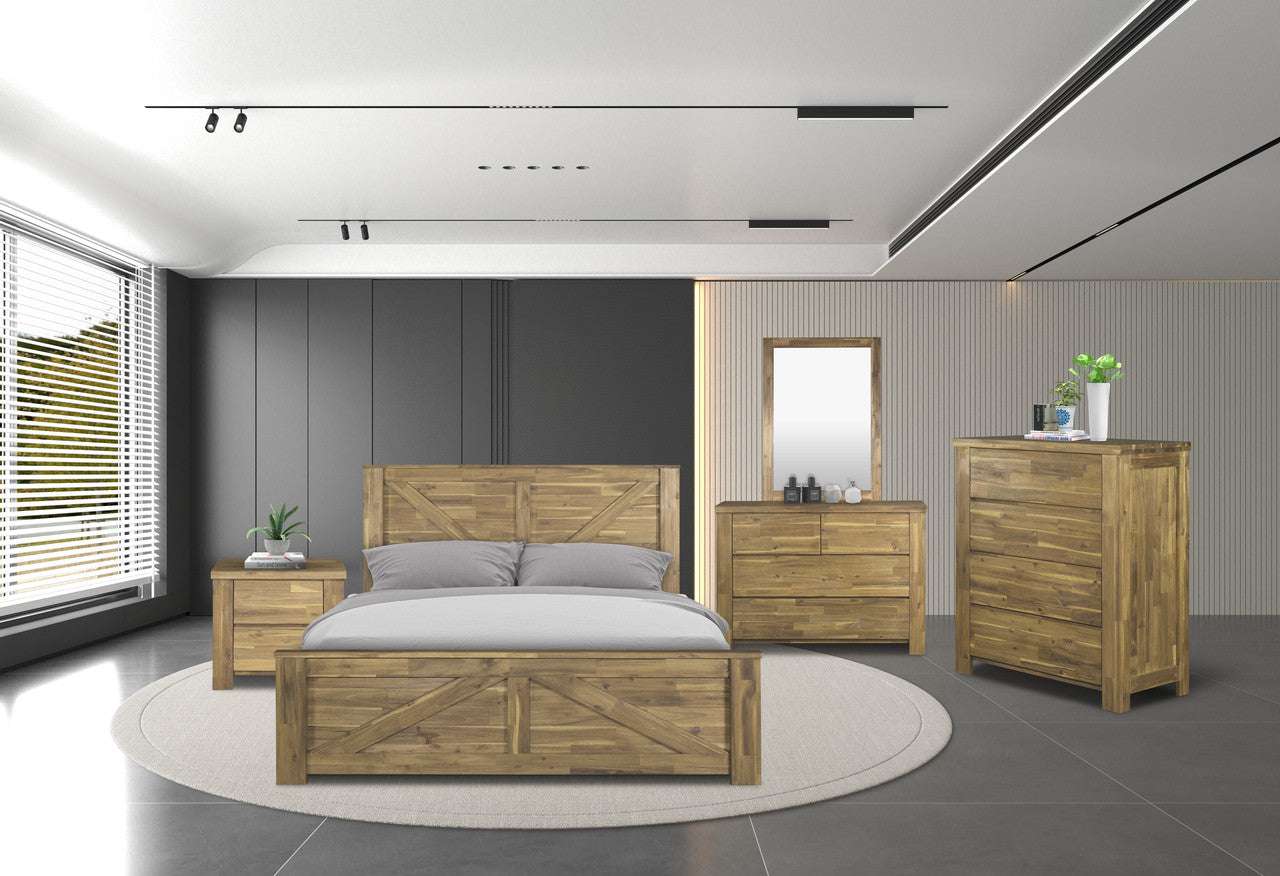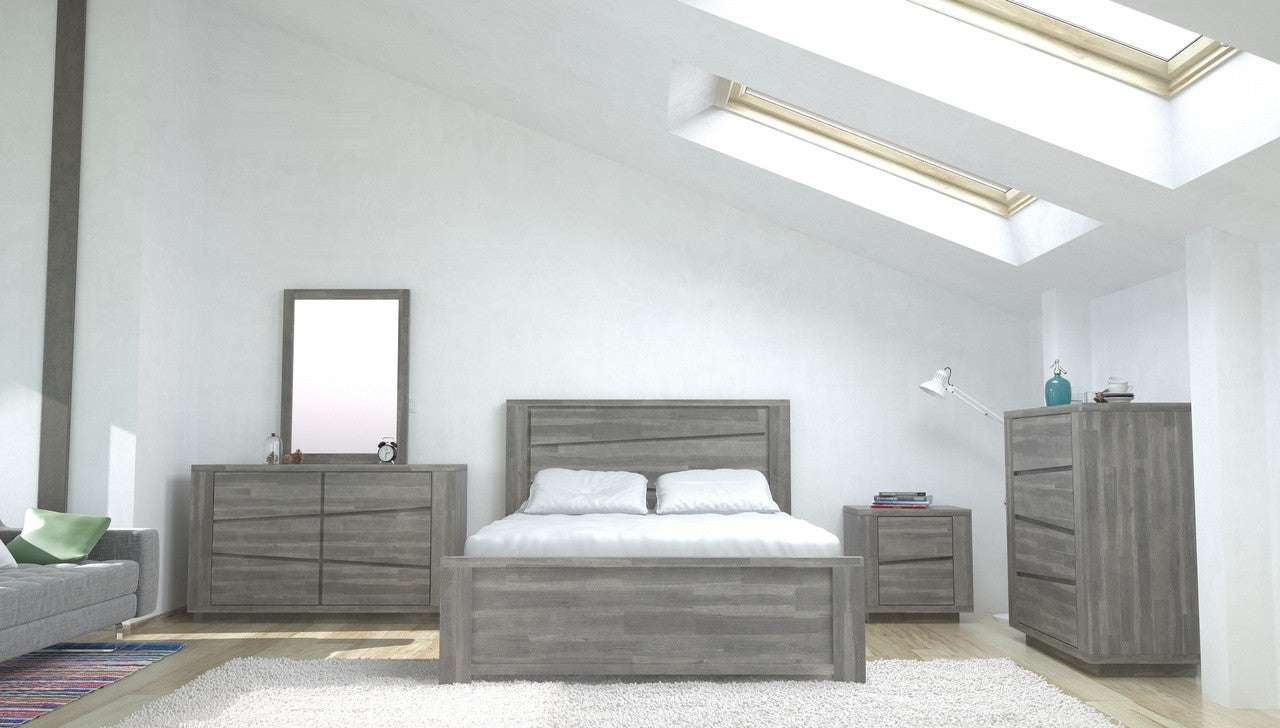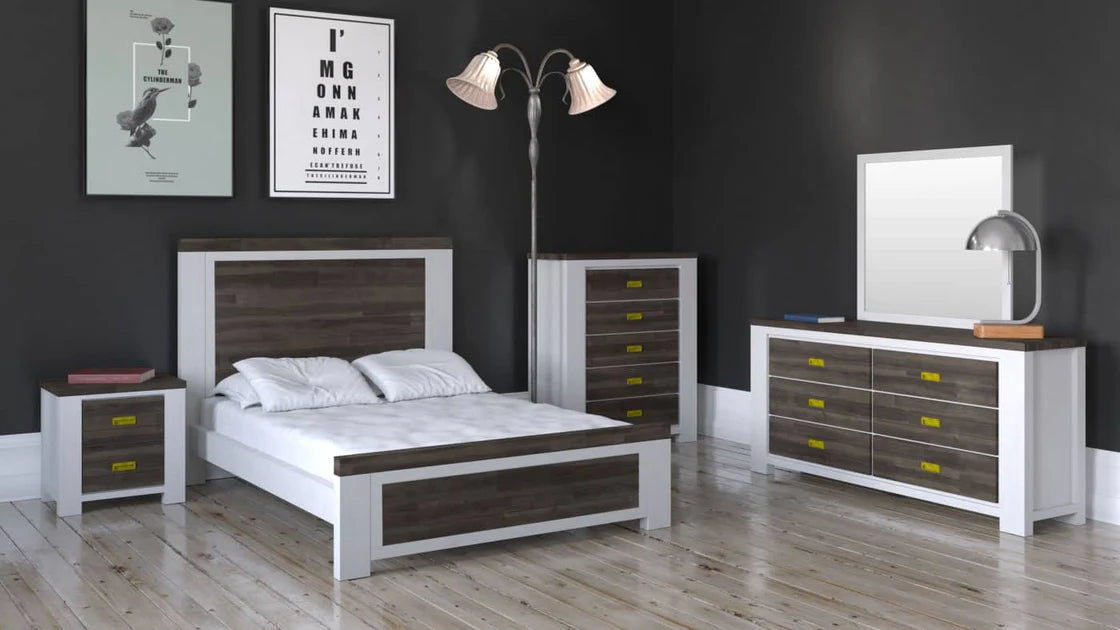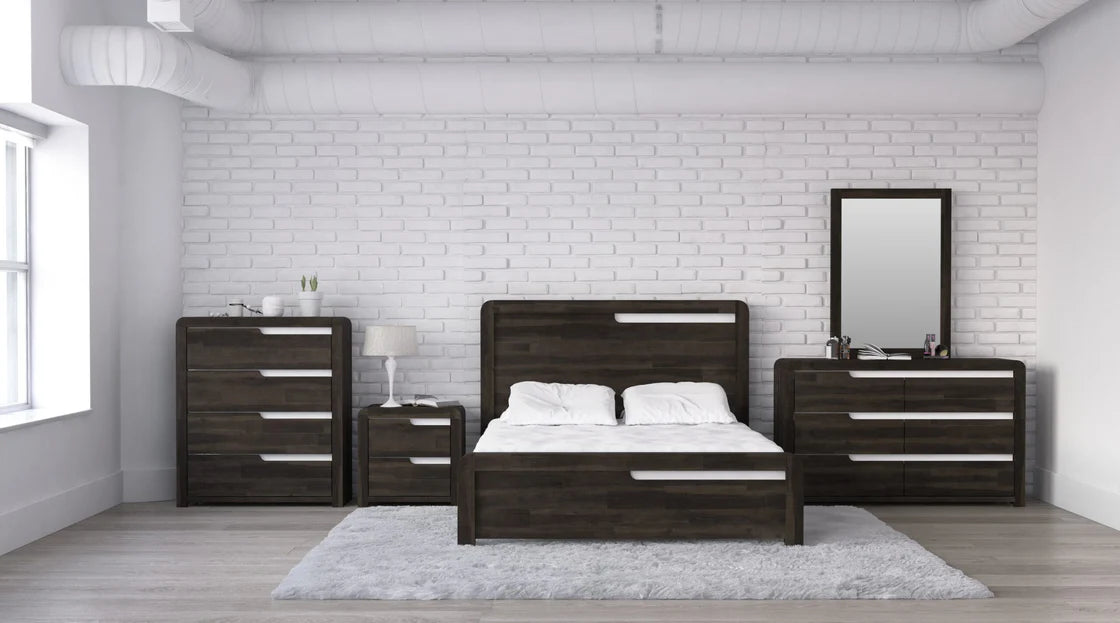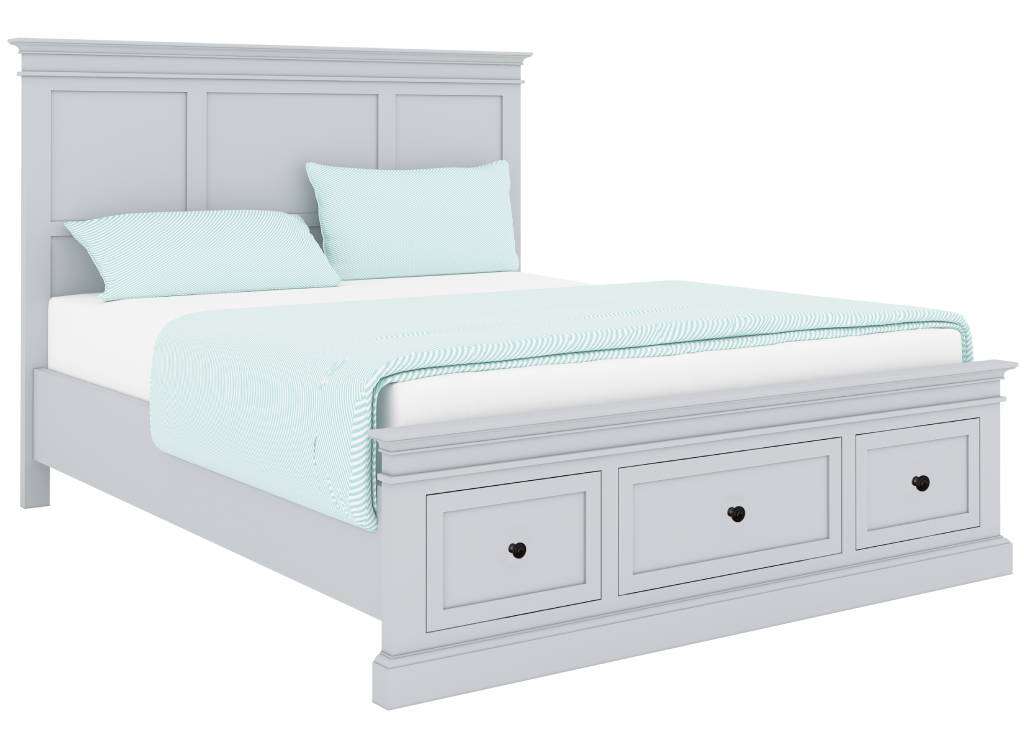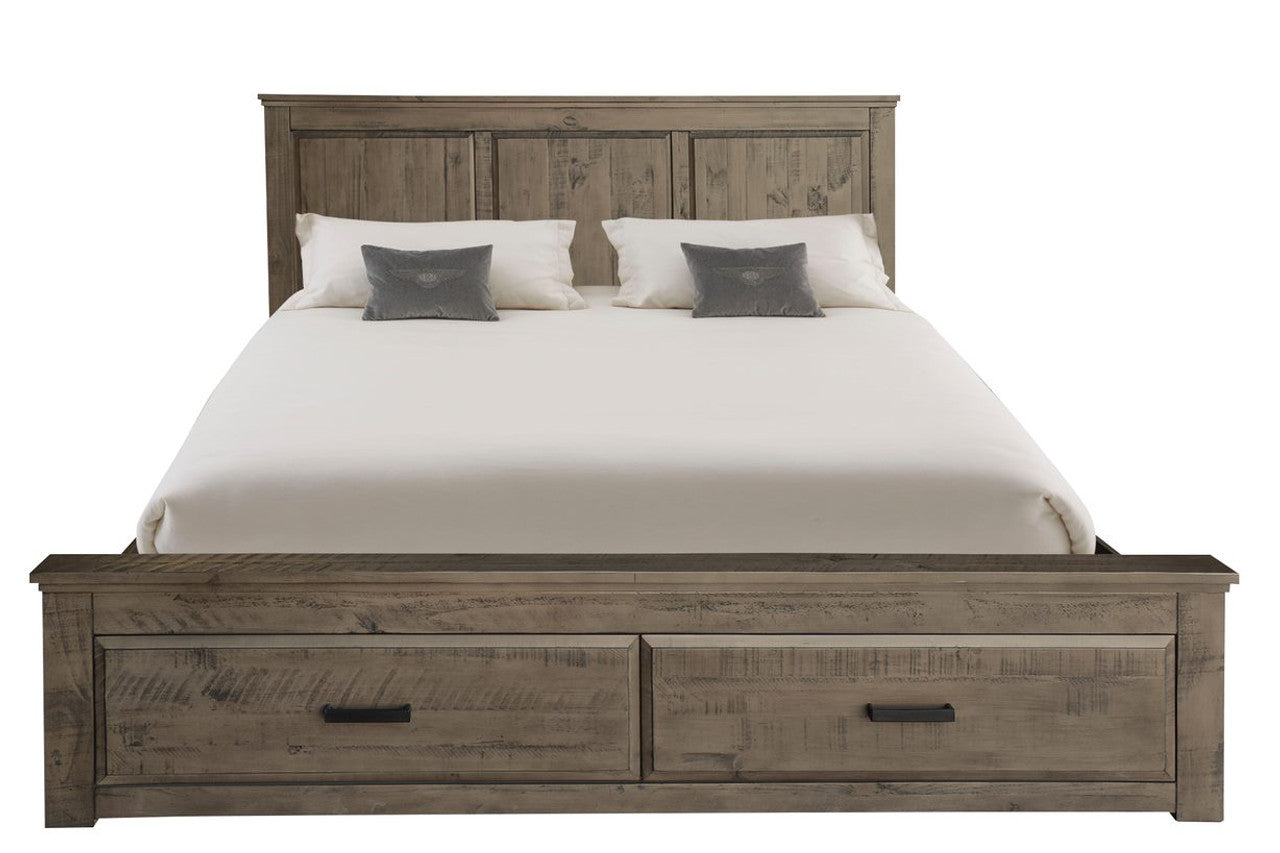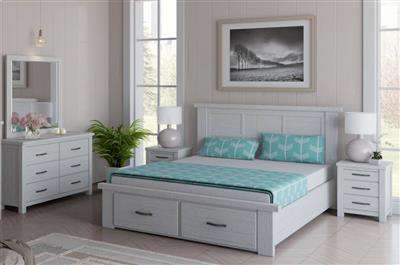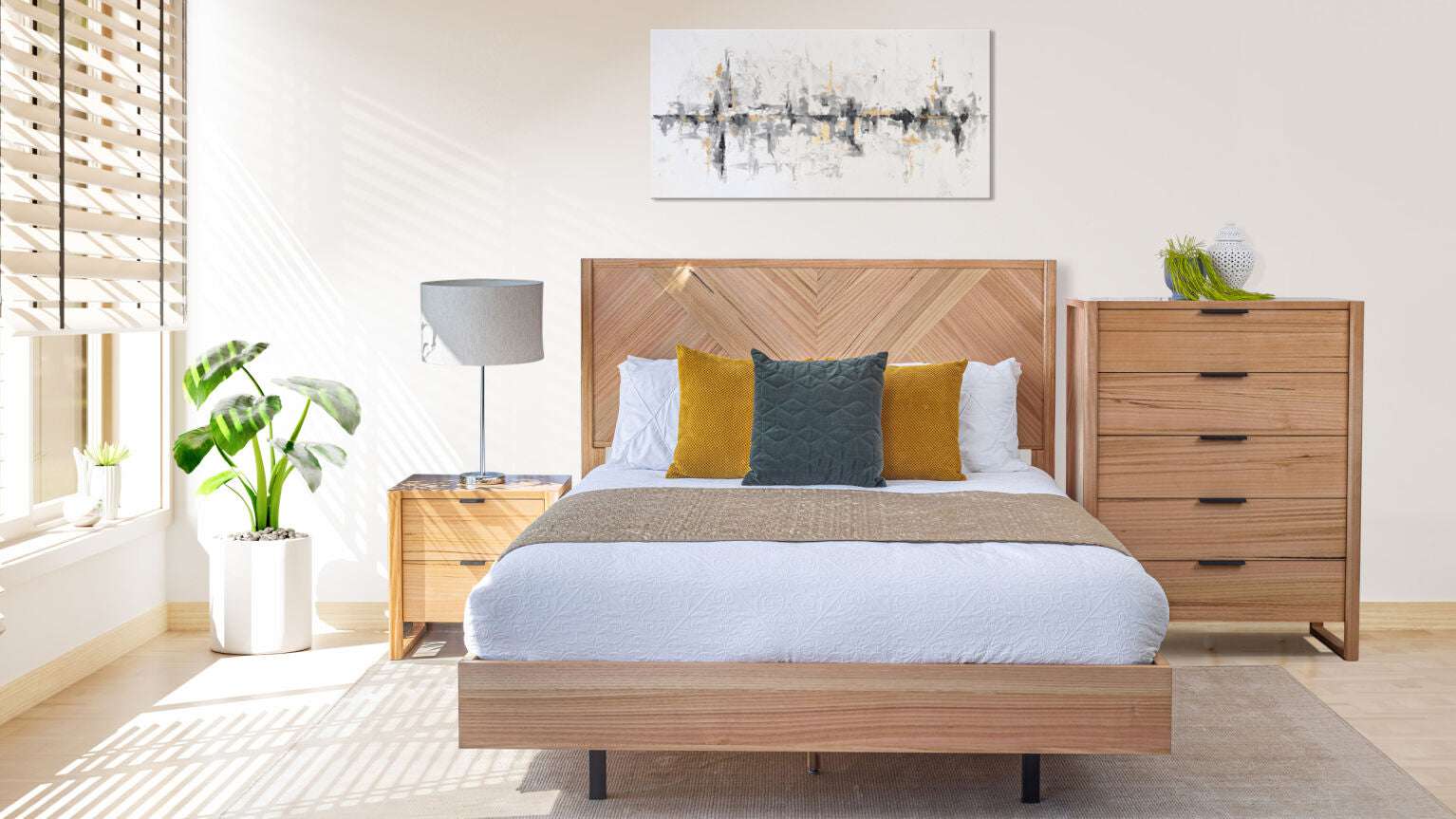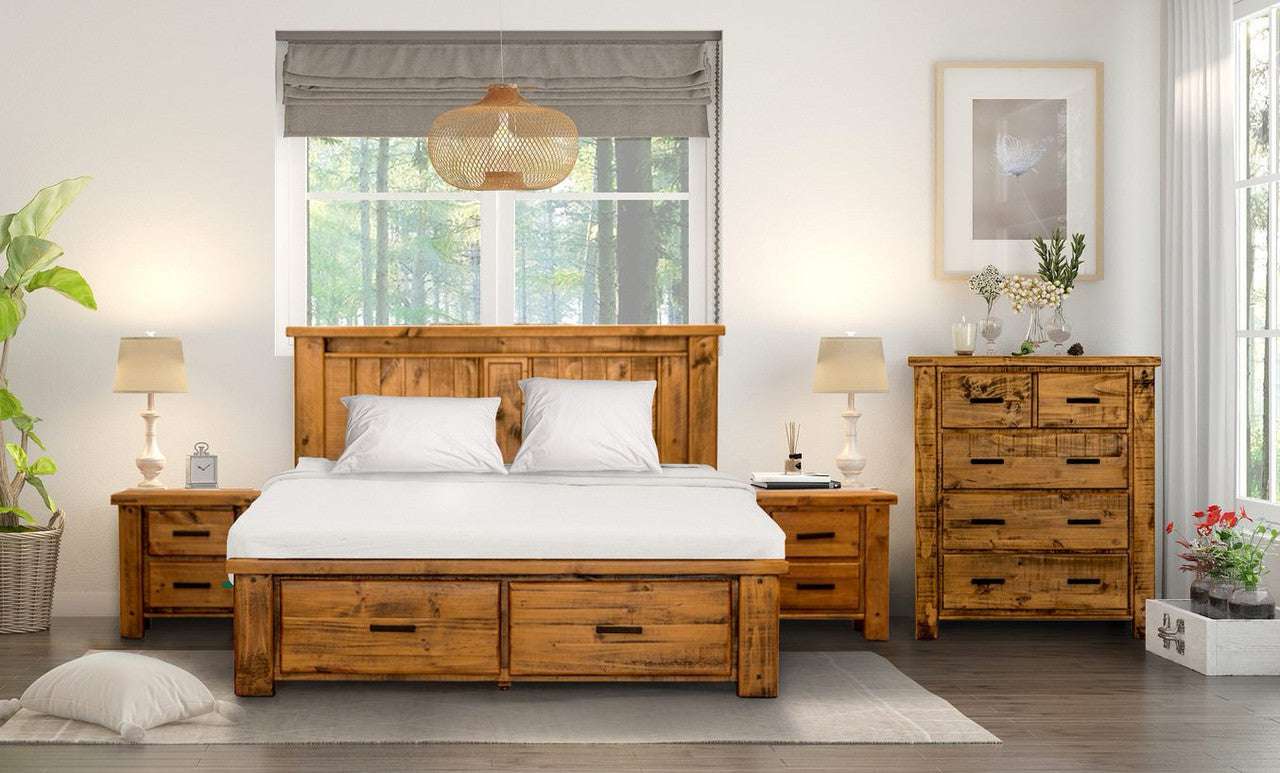Timber Bed Frame FAQs
1. What is a timber bed frame made of?
A timber bed frame is typically made from solid wood, such as oak, pine, or walnut, or engineered wood like plywood or MDF. Solid wood frames offer durability and a natural aesthetic, while engineered wood options are more affordable.
2. How long does a timber bed frame last?
Timber bed frames can last anywhere from 10 to 20 years, depending on the wood type and maintenance.
3. Can timber bed frames be used without a box spring?
Yes, many timber bed frames, especially platform bed frames, do not require a box spring. These frames offer a solid or slatted surface that provides the necessary support for your mattress, making them a convenient choice for you.
4. Are timber bed frames better than metal ones?
Timber bed frames offer a more classic, warm look and tend to be more stable and quieter than metal frames. While metal frames may be more affordable and lighter, timber frames provide a more luxurious and sturdy feel, making them a better option for many users.
5. How do I care for a timber bed frame?
To care for a timber bed frame, regularly dust it and clean it with a soft cloth to avoid scratching the wood. You can use furniture polish or wood conditioner to maintain its finish.
6. What are the advantages of a timber bed frame over a metal one?
Timber bed frames provide better aesthetics, adding a natural and elegant touch to your room. They are also generally quieter than metal frames, as they don't creak.
7. Can a timber bed frame be easily assembled?
Yes, timber bed frames are generally easy to assemble. Most come with detailed instructions.
8. Do timber bed frames require a special mattress?
No, timber bed frames do not require a special mattress. You can use any type of mattress, including memory foam, innerspring, or hybrid mattresses.
9. Are timber bed frames eco-friendly?
Timber bed frames made from sustainably sourced wood are eco-friendly, as wood is a renewable resource.

